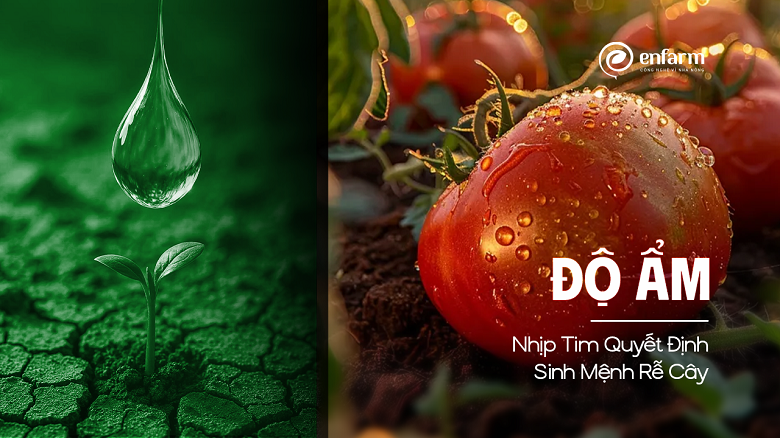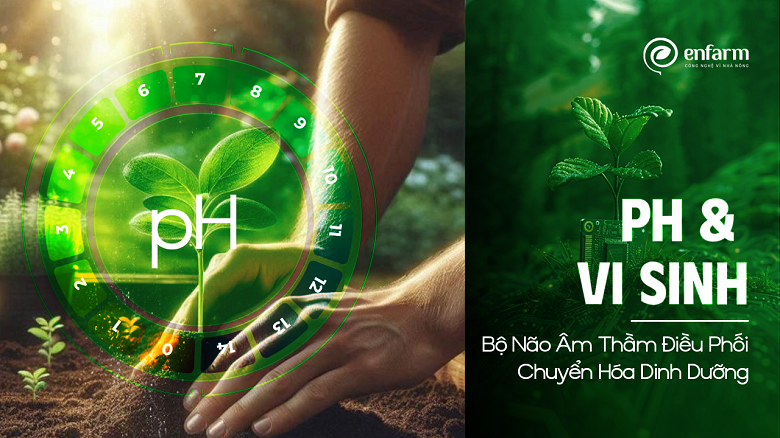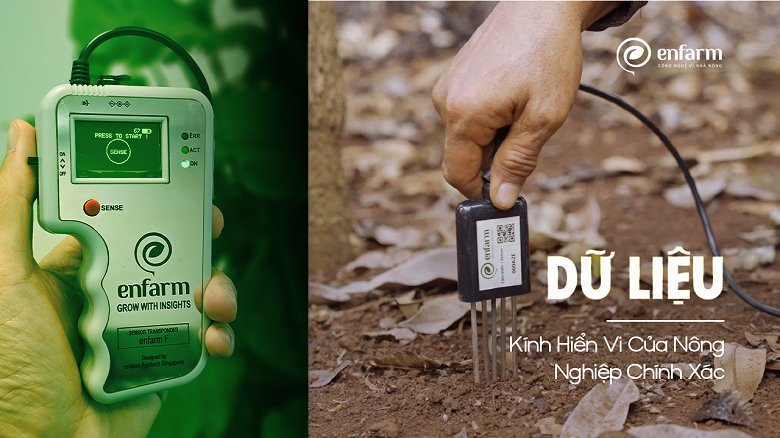Knowledge
Decoding the Silent Genome of Soil: A Journey from Data to Precision Farming
Soil is not an inanimate object; it is a complex living system where every water molecule, nutrient ion, and microorganism is interacting and making decisions. With Enfarm, each sensor placed in the ground is like a microphone that opens a dialogue between the farmer and the field, where data becomes the language of the soil.
Soil: A Living Organism, Not Just a “Root Carrier”
In modern agronomy, soil is defined not merely as a mechanical medium that supports plants, but as a dynamic ecosystem composed of solid, liquid, and gaseous phases—constantly changing across time, space, and cultivation practices. Yet, the common mindset still remains at the level of “good soil is soil with lots of humus, and fertilizing is enough.”
Enfarm chooses to break away from that conventional view: we see soil as a living organism that can be diagnosed, monitored, and responded to. Through a system of sensors measuring moisture, pH, electrical conductivity (EC), temperature, and available nutrients, Enfarm builds a real-time data network—unlocking a more precise perspective on soil conditions and crop needs.
Moisture – The Heartbeat that Determines Root Vitality
Soil moisture directly affects root respiration, nutrient transport, and microbial activity in the rhizosphere. For coffee and durian—two perennial crops with a steady demand for water—maintaining soil moisture within the optimal range (30–60% field capacity) is a prerequisite for healthy growth.

Enfarm installs sensors in the active root zone (20–40 cm), recording data every 30 minutes and generating monitoring charts like an electrocardiogram. From there, the system provides early alerts such as:
“Moisture below 28% – irrigate 400 liters/ha before 5:00 PM.”
Results from pilot regions:
- Reduced irrigation electricity and water costs by an average of 28%
- Stabilized growth during dry seasons, minimizing flower/early fruit drop in durian and water stress in coffee
- Most importantly: farmers no longer have to “guess” when to irrigate, but instead act on a scientific basis.
The Nutrient Transport Circulatory System
1. Insoluble Fertilizer ≠ Useless Fertilizer
When applying fertilizers, especially types like MAP (Mono Ammonium Phosphate), KCl, or Urea, only a portion dissolves in the soil solution. The rest is retained in the solid phase or locked by physico chemical factors (low pH, iron and aluminum oxides, etc.).
For example: Phosphorus (P₂O₅) tends to precipitate with Fe³⁺ and Al³⁺ when pH < 5.5, forming insoluble salts.
2. Enfarm Measures Plant Available Nutrients, Not Just Totals
Unlike conventional soil analysis, which is time consuming and produces delayed results, Enfarm sensors directly measure active ions (P, K, NO₃⁻, EC) — the truly plant available nutrients. When a deficiency is detected, the system does not immediately recommend adding more fertilizer but first evaluates underlying soil conditions:
“Low available phosphorus – apply 200 kg lime/ha to raise soil pH to 5.5 before adding MAP.”
Results:
- Increased phosphorus uptake efficiency by 1.8 to 2.2 times
- Reduced leaching into deeper soil layers or discharge into rivers and streams
pH and Microbes – The Silent Brain Regulating Nutrient Transformation
Key biological processes in soil such as mineralization, nitrogen fixation, and cellulose decomposition all depend on pH and EC. In particular:
Beneficial nitrogen-fixing bacteria (Azotobacter, Rhizobium) thrive at pH 6.0–7.5.
When pH < 5.0, useful microbes are suppressed, pathogenic fungi increase, and the amount of available nitrate (NO₃⁻) decreases.

Enfarm continuously monitors pH and EC, issuing alerts when unfavorable conditions occur:
“pH drops rapidly after 7 days of DAP application – add bio-inoculants and adjust lime application.”
Findings from durian orchards in Krông Pắc show:
When soil pH is stabilized at 5.5–6.5, available NO₃⁻ increases by 35%, and the decomposition of organic residues improves significantly.
Beneficial microbes recover quickly, supporting long-term soil regeneration.
Data – The Microscope of Precision Agriculture
Digital soil data is not just a monitoring tool – it is the foundation for simulating, forecasting, and optimizing the entire farming process.
From a network of more than 1,000 sensors across Vietnam, Enfarm has:
- Mapped phosphorus and potassium flows in the Central Highlands – revealing that phosphorus is lost the most in steep red basalt soils.
- Simulated soil moisture and temperature variations in the sandy coastal areas of Binh Thuan – enabling precise, hourly irrigation scheduling.
- Predicted cadmium (Cd) risks in Dak Lak – caused by low pH and excessive chemical fertilizer use.
Each sensor is a pixel in the picture of Vietnam’s soil ecosystem – the more pixels, the sharper the image.

We have often spoken about “smart farming,” but every piece of advice becomes hollow without localized context – something that only emerges when the soil speaks, and humans truly listen.
This journey does not demand million-dollar investments. All it takes is giving the soil a chance to speak:
- Install an Enfarm sensor for 30 days.
- Track real-time feedback on moisture, nutrients, and microbial activity.
- Make decisions based on data, not guesswork.
Even if you have been growing durian, coffee, or pepper for more than 30 years, you may still be surprised to discover: the soil is not silent – it has simply been waiting to be heard the right way.


